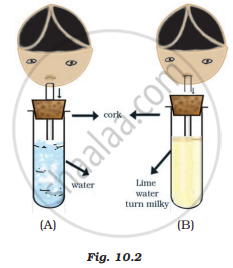Advertisements
Advertisements
प्रश्न
Why do the walls of trachea not collapse when there is less air in it?
उत्तर
The walls of trachea do not collapse when there is less air in it because trachea is supported by rings of soft bones called cartilage.
APPEARS IN
संबंधित प्रश्न
What is the name of the extensions of the epidermal cells of a root which help in respiration?
In the lungs what substance is taken into the body?
Fill in the following blank with suitable word:
Gills are the breathing organs in ___________.
Describe the process of respiration in fish.
What is meant by aquatic animals and terrestrial animals?
Draw a labelled diagram of the human respiratory system.
How are oxygen and carbon dioxide exchanged in our body during respiration?
Lack of oxygen in muscles often leads to cramps in the legs of sprinters. This is due to the conversion of pyruvate to:
Which of the following is known as the energy currency of the cells in biology?
The photosynthesis in a plant is not taking place during the day time if the plant is releasing:
During marathon, we sometimes get painful contractions of leg muscles due to the accumulation of one of the following in leg muscles. This is:
What happens to the glucose which enters the nephron tubule alongwith the filtrate?
Tick the most appropriate answer.
The products of respiration are :
Name the body structure concerned with the given functional activity:
Transports oxygen to the body cells.
State one function of the following:
Pleural fluid
Why is respiration essential for life?
Respiration refers to ____________.
Explain the three pathways of breakdown in living organisms.
Breathing is a process that
- provides O2 to the body.
- breaks down food to release energy.
- helps the body to get rid of CO2.
- produces water in the cells.
Which of the following gives the correct combination of functions of breathing?
Observe Figure 10.2 carefully and answer the following questions.

- Which process is being tested in the activity?
- What is the result of the activity? Give reasons.
